
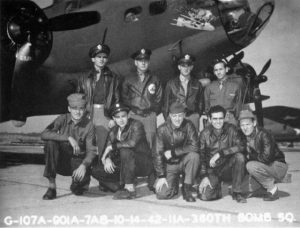 Every war has its casualties…it is an inevitable part of battle. World War II was no different, and in fact it was the deadliest war in world history, with casualties between 40,000,000 and 72,000,000. On average, 6,600 American servicemen died per month during World War II, about 220 a day. By the end of the war, over 40,000 airmen were killed in combat theatres and another 18,000 wounded. Some 12,000 missing men were declared dead, including a number liberated by the Soviets but never returned. More than 41,000 were captured, half of the 5,400 held by the Japanese died in captivity, compared with one tenth in German hands. As with any part of the war, being an airman in World War II was simply a very dangerous business.
Every war has its casualties…it is an inevitable part of battle. World War II was no different, and in fact it was the deadliest war in world history, with casualties between 40,000,000 and 72,000,000. On average, 6,600 American servicemen died per month during World War II, about 220 a day. By the end of the war, over 40,000 airmen were killed in combat theatres and another 18,000 wounded. Some 12,000 missing men were declared dead, including a number liberated by the Soviets but never returned. More than 41,000 were captured, half of the 5,400 held by the Japanese died in captivity, compared with one tenth in German hands. As with any part of the war, being an airman in World War II was simply a very dangerous business.
Over the years of World War II, there were many stories of men falling from their planes either from attack or accident. I’m sure some were just stories, but this is a true story. Staff Sergeant Alan Magee was born on January 13, 1919 in Plainfield, New Jersey, the youngest of six children of Resue and Doretta (Winn) Magee. Alan grew to be a short 5’7″ tall. That is short for a man, but slightly tall for a ball turret gunner on a B-17 bomber. Like many men, Alan joined the service right after the attack on Pearl Harbor. He was assigned as a ball turret gunner with the 303rd Bomb Group, 360th Squadron stationed at RAF Molesworth, which is a Royal Air Force station located near Molesworth, Cambridgeshire, England.
At 5’7″ inches, Magee was barely small enough to fit in the B-17’s ball turret. The ball turret was a cramped, donut shaped plastic glass and metal turret on the belly of the bomber. It was such a tight fit that a gunner’s knees were practically against his chest. Magee had to leave his parachute on the deck of the four engine Flying Fortress. That fact would prove to be detrimental. On January 3, 1943, Magee was assigned to a B-17, nicknamed “Snap! Crackle! Pop!” They were on a bombing run during the daytime over Saint Nazaire, France, also known at “Flack City,” when German fighters shot off a part of the right wing, causing the plane to enter a deadly spin. This was Magee’s seventh mission. That was an amazing feat in and of itself, because the life expectancy of a ball turret gunner in World War II was 12 minutes. It was really considered a suicide position on the plane. Oddly too, Magee was one of the oldest members of the 10 man crew at 24 years. The pilot, Captain Arthur Adams, was only 19, and this was only his third combat mission.
Magee was wounded in the attack, but managed to escape the ball turret, scrambling back into the cabin for his parachute. The only problem was that his parachute had been damaged and was totally useless, so having no other choice, Magee leapt from the spiraling plane without his parachute, losing consciousness rapidly because of the altitude. During his fall from the plane, Magee asked God to save his life. “I don’t wish to die because I know nothing of life,” was his appeal to God. Then, he totally lost consciousness and crashed through the glass roof of the Saint Nazaire train station. Eyewitnesses watched in horror as Magee came through the skylight. When he regained consciousness, Magee said to his captors: “Thank God I’m alive.” Magee’s injuries included 28 shrapnel wounds. A lung and kidney were hit. His nose and an eye were ripped open. His broken bones included his right leg and ankle. A right arm was nearly severed. The Germans decided that anyone who could miraculously survive such a fall deserved “real special attention.” It is thought that he fell over four miles before crashing through the glass roof. Some said they thought that the glass roof lessened Magee’s impact, and rescuers found him still alive on the floor of the station. It is my belief that God sent His angels to break the fall, because a 20,000 foot into a soft field can be fatal, so it is a miracle that he fell through a glass roof onto a concrete floor and lived. Magee regained consciousness in the first aid station before being transferred to the local hospital. “I owe the German military doctor who treated me a debt of gratitude,” said Magee. “He told me, ‘We are enemies, but I am first a doctor and I will do my best to save your arm.’” The doctor saved Magee’s arm and tended his other injuries, but unfortunately, Magee never found out the doctor’s name, so he couldn’t thank him. Staff Sargent Magee was taken as a POW and given continued medical treatment for his injuries by his captors. Magee was rescued in May 1945, and received the Air Medal for meritorious conduct and the Purple Heart. When the war was over, Magee got his pilot’s license and enjoyed flying. He worked a variety of jobs in the airline industry, and retired in 1979. He then moved to Northern New Mexico.
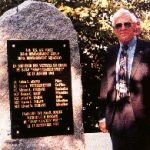
 The people of Saint Nazaire, France honored Magee and the crew of his bomber on January 3rd, 1993 by erecting a six foot tall memorial to them. Alan Magee passed away in San Angelo, Texas on December 20th, 2003, at 84 from stroke and kidney failure. With the German doctors’ help, Magee fully recovered. Magee later hiked and backpacked and “led a pretty good life.” Two of his crewmen also survived. In all, 75 airmen died, seven U.S. planes were destroyed and 47 were damaged that day.
The people of Saint Nazaire, France honored Magee and the crew of his bomber on January 3rd, 1993 by erecting a six foot tall memorial to them. Alan Magee passed away in San Angelo, Texas on December 20th, 2003, at 84 from stroke and kidney failure. With the German doctors’ help, Magee fully recovered. Magee later hiked and backpacked and “led a pretty good life.” Two of his crewmen also survived. In all, 75 airmen died, seven U.S. planes were destroyed and 47 were damaged that day.

 The mind of a soldier, in any branch of the service, is a mind that many of us do not understand. They go into situations that would send most of us running for the nearest hole to hide in, and then…when they write home or call home, they make light of the things they are doing…if they tell their family about their missions at all, because they don’t want to worry their loved ones. Often, if the family finds out about the missions they were on at all, it is years later. Maybe it is that they had to wrap their own minds around the things they had done, before they could tell anyone else about it. My dad, Allen Spencer was that way. In the letters he wrote home to his family, and especially his mother, his words were always very upbeat, very careful not to say the wrong things…things that might make them fear for his life, more than they already did. My nephew, Allen Spencer Beach, my dad’s namesake, is much like his grandfather in that way.
The mind of a soldier, in any branch of the service, is a mind that many of us do not understand. They go into situations that would send most of us running for the nearest hole to hide in, and then…when they write home or call home, they make light of the things they are doing…if they tell their family about their missions at all, because they don’t want to worry their loved ones. Often, if the family finds out about the missions they were on at all, it is years later. Maybe it is that they had to wrap their own minds around the things they had done, before they could tell anyone else about it. My dad, Allen Spencer was that way. In the letters he wrote home to his family, and especially his mother, his words were always very upbeat, very careful not to say the wrong things…things that might make them fear for his life, more than they already did. My nephew, Allen Spencer Beach, my dad’s namesake, is much like his grandfather in that way.
When Allen joined the Navy in 2009, it was to be part of the Naval Air Force. Part of his training was parachuting from a plane. At some point in his training, Allen injured his foot, and while the injury itself would not have stopped him from continuing in his chosen field, it delayed training long enough so that he wouldn’t be able to catch up with his class. It was at this point that Allen decided to become a medic. All of that information was known to most of his family at that time. It was certain parts of Allen’s work after that time that was only known to his family a number of years later. After the 7.0 earthquake that occurred in Haiti on January 12, 2010, Allen was one of the soldiers who was sent in to assist. I think most of us saw pictures of the devastation there, and the loss of life, but I seriously doubt that the news media showed us some of the worst parts of the devastation. It would be too much for many people to bare. I’m sure that is why Allen, like his grandfather, couldn’t tell his mother everything he did or saw. He had to process it himself, and put enough time between the event and his mother’s knowledge of it, so that hopefully she would not worry too much. I also have to wonder if his experience in Haiti is what made him decide to become a medic after his foot injury.
My sister, Caryl Reed, also found out, after the fact, that at one point, her son, Allen was training to be a medic for the Marines. Had he been needed, Allen would have become a medic on the front lines in a war zone. Here again, Allen knew that there needed to be enough time between the event and his mother’s knowledge of it, so she would not have nightmares. When she found out about that, all my sister could think was, “Thank the Lord that he didn’t have to go.” It was a mother’s second worst nightmares…the first being that her son actually goes to the front lines. A soldier has to push their own fear down as deep as they can, and make light of things with their loved ones, because they can imagine the anguish for their family, if they knew that truth…that they 
 are in situations that really scare them, and they have no control over it. It is the experiences we live that help us to decide the direction our life will take. For Allen, what began as a career as maybe a pilot, has changed to a career in several different areas of medicine. From corpsman, to training as a field medic, to studying to be a hospital administrator. Allen left active duty in 2014, and lives in Washington DC, while his wife, Gabby finishes her service, and he finishes his studies. I know he will have a bright future. Today is Allen’s birthday. Happy birthday Allen!! Have a great day!! We love you!!
are in situations that really scare them, and they have no control over it. It is the experiences we live that help us to decide the direction our life will take. For Allen, what began as a career as maybe a pilot, has changed to a career in several different areas of medicine. From corpsman, to training as a field medic, to studying to be a hospital administrator. Allen left active duty in 2014, and lives in Washington DC, while his wife, Gabby finishes her service, and he finishes his studies. I know he will have a bright future. Today is Allen’s birthday. Happy birthday Allen!! Have a great day!! We love you!!

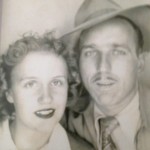 New Year’s Eve and New Year’s Day have always held a special place of significance in my family, because my mother, Collene Spencer was born on New Year’s Day. We always held a New Year’s Eve party, and I guess as kids, we thought that everyone did that, but it wasn’t so. I know lots of people have a party on New Year’s Eve, but not really as many as I had always thought. Most people just go out to a bar, and celebrate with a large group of people, but that would never have been the same thing in our family. Now that Mom is in Heaven, we still have the party, and as many of us as can, come to it. We do it in honor of Mom, because even though she is in Heaven…it’s still her special day. The traditional beating the pans…which my mom came up with, because we didn’t have noisemakers years ago, just doesn’t feel the same, however. That was always a favorite part for Mom. Once we rang the new year in right, we all go around to each other and wish each other a Happy New Year…and for Mom, a happy birthday. Then we all sang happy birthday to her. Of course, this wasn’t her birthday party…that would come on New Year’s Day. It was a two day celebration in Mom’s honor. Some things just cannot stay the same after the passing of a loved one, and I suppose this is one of them. We can tall Mom happy birthday, but not in person.
New Year’s Eve and New Year’s Day have always held a special place of significance in my family, because my mother, Collene Spencer was born on New Year’s Day. We always held a New Year’s Eve party, and I guess as kids, we thought that everyone did that, but it wasn’t so. I know lots of people have a party on New Year’s Eve, but not really as many as I had always thought. Most people just go out to a bar, and celebrate with a large group of people, but that would never have been the same thing in our family. Now that Mom is in Heaven, we still have the party, and as many of us as can, come to it. We do it in honor of Mom, because even though she is in Heaven…it’s still her special day. The traditional beating the pans…which my mom came up with, because we didn’t have noisemakers years ago, just doesn’t feel the same, however. That was always a favorite part for Mom. Once we rang the new year in right, we all go around to each other and wish each other a Happy New Year…and for Mom, a happy birthday. Then we all sang happy birthday to her. Of course, this wasn’t her birthday party…that would come on New Year’s Day. It was a two day celebration in Mom’s honor. Some things just cannot stay the same after the passing of a loved one, and I suppose this is one of them. We can tall Mom happy birthday, but not in person.
Sometimes, I think God places people in our lives for a specific moment and a specific reason. As my husband, Bob and I were leaving Denny’s this morning, after having breakfast, I glanced at a couple sitting in a booth we passed on our way out. At first glance, the woman looked a lot like my mother when she was young…enough so, in fact, that I had to do a double take. Yes, there were similarities, but she didn’t really look enough like Mom to mistake her for my mom after a good look, but I walked out of the restaurant smiling anyway, because it seemed such a sweet gift from God. It was like seeing my mom on her birthday! Of course, I know it wasn’t her, nor did the woman look totally like her, but rather it just seemed like a reminder that she is with God, and that she is very happy. Mom had been on my mind much more than usual for the past several days…probably because of her birthday. Nevertheless, that woman, in that place, for that moment, made me smile, because just for a second, at a quick glance, she reminded me of my mom.
As with my dad, I somehow never expected to live one day on this earth without my mom here on Earth. We were always such a close family, and I never expected that to change, and in reality, I suppose it hasn’t. 
 Rather, we just have to wait to see our parents again. That is the sad part about getting on with life after your parents have gone to Heaven. You have to take the reigns, and lead your family in the way they should go, just like your parents did, but often you still feel like that little daughter would love to ask your parents’ advise about life again. There is a little joke on Facebook about wishing you were a kid again. Basically, I want my mommy and daddy. I’m tired of adulting.” Today would have been my mom’s 81st birthday. Happy birthday in Heaven Mom. We love and miss you very much.
Rather, we just have to wait to see our parents again. That is the sad part about getting on with life after your parents have gone to Heaven. You have to take the reigns, and lead your family in the way they should go, just like your parents did, but often you still feel like that little daughter would love to ask your parents’ advise about life again. There is a little joke on Facebook about wishing you were a kid again. Basically, I want my mommy and daddy. I’m tired of adulting.” Today would have been my mom’s 81st birthday. Happy birthday in Heaven Mom. We love and miss you very much.


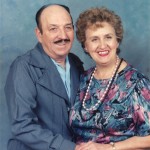 On the last day of the year, many people are busily planning the festivities for the evening. Others are contemplating the coming year and how they might make it better than the last. These are things that I am doing too, but I am also looking back on the year that is quickly coming to a close. Every year has it’s good things and it’s bad things. This year is no different. As the year began, I was recovering from a broken shoulder, while my niece, Chantel Balcerzak was getting used to her new role as grandma to little Izabella Siara Harman. February brought a promotion for my brother-in-law, Chris Hadlock to Lieutenant with the Casper Police Department, and then the sad 1st anniversary of our mother’s passing. I couldn’t believe she had been gone a year already. March brought the 41st anniversary of my marriage to Bob Schulenberg, and the love continues to grow. It also brought the purchase of a home in northwestern Washington for our daughter, Amy Royce and her husband, Travis.
On the last day of the year, many people are busily planning the festivities for the evening. Others are contemplating the coming year and how they might make it better than the last. These are things that I am doing too, but I am also looking back on the year that is quickly coming to a close. Every year has it’s good things and it’s bad things. This year is no different. As the year began, I was recovering from a broken shoulder, while my niece, Chantel Balcerzak was getting used to her new role as grandma to little Izabella Siara Harman. February brought a promotion for my brother-in-law, Chris Hadlock to Lieutenant with the Casper Police Department, and then the sad 1st anniversary of our mother’s passing. I couldn’t believe she had been gone a year already. March brought the 41st anniversary of my marriage to Bob Schulenberg, and the love continues to grow. It also brought the purchase of a home in northwestern Washington for our daughter, Amy Royce and her husband, Travis.
April brought my 60th birthday, although I felt no upset by that. I have always felt that the key is to enjoy the age you are at, and I will continue to do so. May 5th brought the sad reminder that my father-in-law, Walt Schulenberg has been in Heaven for 3 years now. May also brought the graduation of my grandson, Chris 

 Petersen from the Culinary School at Sheridan College. It’s hard for me to believe that his college years are so quickly over. My daughter, Amy made the trip to Wyoming to attend the graduation, and it was so good to see her again…even if it was for such a short time. June brings the birthdays of my daughters, and these days it’s a little bit bittersweet, because Amy is so far away. My oldest daughter, Corrie Petersen and her husband, Kevin went camping for her birthday, so we joined them on Casper Mountain for a birthday evening. We all had a lovely time. I just wish Amy’s family could have been there too.
Petersen from the Culinary School at Sheridan College. It’s hard for me to believe that his college years are so quickly over. My daughter, Amy made the trip to Wyoming to attend the graduation, and it was so good to see her again…even if it was for such a short time. June brings the birthdays of my daughters, and these days it’s a little bit bittersweet, because Amy is so far away. My oldest daughter, Corrie Petersen and her husband, Kevin went camping for her birthday, so we joined them on Casper Mountain for a birthday evening. We all had a lovely time. I just wish Amy’s family could have been there too.
July brought with it one of the biggest changes of my life, when my husband, Bob Schulenberg retired from the City of Casper. It was a day of rejoicing, because he had been ready to retire for some time now. July also brought with it, another loss…of sorts, when my granddaughter, Shai Royce moved to Washington to be near her family. It was hard on me, but I knew it was best for her, because she had been so lonely for her parents and her brother, Caalab. While we continue to miss her and the rest of her family, we are happy, because they are happy. July also brought wedding bells for my nephew, Garrett Stevens as he married his best friend, 

 Kayla Smiley. August brought a beautiful new addition to our family when my niece Jessi Sawdon and her husband, Jason welcomed daughter Adelaide Ione to our family. Addi was named after Jessi’s great grandmother and Jessi’s grandmother, my mom, Collene Ione Spencer. In September, my sister-in-law, Brenda Schulenberg, had skin removal surgery after losing 350 pounds. She had a bleeding issue, but she is doing well now, and we are very proud of her. September also brought with it the sadness of loss, as we said goodbye to Bob’s aunt, Linda Cole. Hers was a shock, because her passing was so unexpected.
Kayla Smiley. August brought a beautiful new addition to our family when my niece Jessi Sawdon and her husband, Jason welcomed daughter Adelaide Ione to our family. Addi was named after Jessi’s great grandmother and Jessi’s grandmother, my mom, Collene Ione Spencer. In September, my sister-in-law, Brenda Schulenberg, had skin removal surgery after losing 350 pounds. She had a bleeding issue, but she is doing well now, and we are very proud of her. September also brought with it the sadness of loss, as we said goodbye to Bob’s aunt, Linda Cole. Hers was a shock, because her passing was so unexpected.
October found my grandson, Josh Petersen actively pursuing his dream of becoming a firefighter as he took Boces classes to get a head start on the Fire Science degree he needs. It also found us celebrating with my brother-in-law, Chris Hadlock, as he became the Peace Officer of the year. November brought an unusual Thanksgiving as Bob and I traveled to Ferndale, Washington to spend the holiday with Amy’s family, in a week that went by way too fast. Then, as we were on our way home, we found out about the passing of my cousin, Shirley Cameron’s husband, Shorty’s passing…another shocking passing that was very unexpected. December 

 brought the sad reminder that my dad, Allen Spencer had been in Heaven now for 9 long years. That seems impossible to me. December also brought college graduation for my niece, Michelle Stevens, who will now start her teaching career. This was most certainly a year of ups and downs, but with the coming new year, comes the hope for a great future.
brought the sad reminder that my dad, Allen Spencer had been in Heaven now for 9 long years. That seems impossible to me. December also brought college graduation for my niece, Michelle Stevens, who will now start her teaching career. This was most certainly a year of ups and downs, but with the coming new year, comes the hope for a great future.

 It is so easy to focus on our own little planet, or our own little space, but the reality is that outside of our atmosphere, there is a huge space that makes us look like a speck of dust…if that. In centuries past, people could see the sun and the stars, and I suppose they considered the fact that there might be something else out there, but since they really had no way of viewing it better than using the naked eye, they just thought that it was what it was…somewhat like a curtain with holes poked into it, and they really didn’t ever expect to see anything more. Still, somewhere along the way, someone thought it might be possible to see further into the sky that just the few stars that were visible. Inventions came about to aid the people in seeing into the great beyond.
It is so easy to focus on our own little planet, or our own little space, but the reality is that outside of our atmosphere, there is a huge space that makes us look like a speck of dust…if that. In centuries past, people could see the sun and the stars, and I suppose they considered the fact that there might be something else out there, but since they really had no way of viewing it better than using the naked eye, they just thought that it was what it was…somewhat like a curtain with holes poked into it, and they really didn’t ever expect to see anything more. Still, somewhere along the way, someone thought it might be possible to see further into the sky that just the few stars that were visible. Inventions came about to aid the people in seeing into the great beyond.
One man who had a vision to be able to see what was out there, was Edwin Hubble. Edwin wanted to learn about space from the time he was a young boy. He said, “I knew that even if I were second or third rate, it was astronomy that mattered.” He knew that he simply couldn’t do anything else. That kind of 
 determination makes a person great, and he was determined. Hubble’s work was something his father didn’t understand, and didn’t want him to do, in fact making him promise to be a lawyer. Hubble tried, but his heart just wasn’t in it. He also worked as a teacher of Spanish, Physics, Mathematics, and coached basketball. His popularity as a teacher is recorded in the school yearbook dedicated to him: “To our beloved teacher of Spanish and Physics, who has been a loyal friend to us in our senior year, ever willing to cheer and help us both in school and on the field, we, the class of 1914, lovingly dedicate this book.”
determination makes a person great, and he was determined. Hubble’s work was something his father didn’t understand, and didn’t want him to do, in fact making him promise to be a lawyer. Hubble tried, but his heart just wasn’t in it. He also worked as a teacher of Spanish, Physics, Mathematics, and coached basketball. His popularity as a teacher is recorded in the school yearbook dedicated to him: “To our beloved teacher of Spanish and Physics, who has been a loyal friend to us in our senior year, ever willing to cheer and help us both in school and on the field, we, the class of 1914, lovingly dedicate this book.”
While Edwin Hubble’s father may have thought his son had made a terrible mistake, and that he was even one can short of a six-pack, Edwin Hubble knew that there was more to see out there, and he simply couldn’t sit idly by and miss God’s big show. In October 1923 he spotted what he first thought was a nova star flaring up dramatically in the M31 “nebula” in the constellation of Andromeda. After careful examination of photographic plates of the same area taken previously by other astronomers, including his greatest scientific rival, Harlow 
 Shapley, who thought that the Milky Way was the end of the universe, he realized that it was a Cepheid star. On December 29, 1924, all of his hard work came to fruition, when he made another startling find…all galaxies seemed to be receding from us with velocities that increased in proportion to their distance from us…a relationship now known as Hubble’s Law. On this day, December 30, 1924, Edward Hubble was finally able to make the announcement that would make his a household name…that the universe was not static, but ever expanding and that there were many other galaxies out there.
Shapley, who thought that the Milky Way was the end of the universe, he realized that it was a Cepheid star. On December 29, 1924, all of his hard work came to fruition, when he made another startling find…all galaxies seemed to be receding from us with velocities that increased in proportion to their distance from us…a relationship now known as Hubble’s Law. On this day, December 30, 1924, Edward Hubble was finally able to make the announcement that would make his a household name…that the universe was not static, but ever expanding and that there were many other galaxies out there.
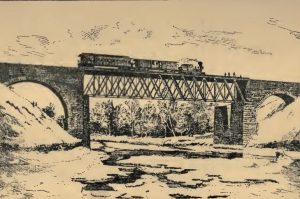 Through the centuries, new designs were developed to build things we needed. As the railroad moved across the nation, track laying came across deep gorges and flat plains. Of course, the flat plains were easy to deal with, and trains could simply go around any hills in the area, but the rivers and gullies were a bigger problem. They needed bridges, and so Charles Collins and Amasa Stone jointly designed a bridge to be used at Ashtabula, Ohio. It was the first Howe-type wrought iron truss bridge built. Collins was worried about the bridge, thinking that it was “too experimental” and needed further evaluation. Nevertheless, higher powers prevailed, and the bridge was built. Collins had been right to be concerned. The bridge lasted just 11 years before it collapsed.
Through the centuries, new designs were developed to build things we needed. As the railroad moved across the nation, track laying came across deep gorges and flat plains. Of course, the flat plains were easy to deal with, and trains could simply go around any hills in the area, but the rivers and gullies were a bigger problem. They needed bridges, and so Charles Collins and Amasa Stone jointly designed a bridge to be used at Ashtabula, Ohio. It was the first Howe-type wrought iron truss bridge built. Collins was worried about the bridge, thinking that it was “too experimental” and needed further evaluation. Nevertheless, higher powers prevailed, and the bridge was built. Collins had been right to be concerned. The bridge lasted just 11 years before it collapsed.
On December 28, 1876, a Lake Shore and Michigan Southern Railway train…the Pacific Express left New York. It struggled along through the drifts and the blinding storm. The train was pulling into Ashtabula, Ohio, shortly before 8:00pm on December 29, 1876, several hours behind schedule. The eleven cars were a heavy burden to the two engines. The leading locomotive broke through the drifts beyond the ravine, and rolled on across the bridge at Ashtabula at less than ten miles an hour. The head lamp could barely be seen because the air was thick with the driving snow. The leading engine reached solid ground, and the engineer had just given it steam…when something in the undergearing of the bridge snapped.
What followed was a horror beyond horrors…not only for the victims, but for the rescuers as well…maybe even more so for the rescuers. As the bridge crumbled beneath the weight of the train, the train and its 159 passengers fell 70 feet into the river below. More than 90 people, passengers and crew, were killed when the train hit the river and ignited into a huge ball of flames. Only the lead engine escaped the fall. As the bridge fell, the engineer gave it a quick head of steam, which tore the draw head from its tender, and the liberated engine shot forward and buried itself in the snow. The engineer escaped with a broken leg. The proportions of the Ashtabula horror are still only approximately known. Daylight, brought with it the opportunity to find and count the saved. It also revealed the fact that two out of every three passengers on the train were lost. Of the 160 passengers who the injured conductor reports as having been on board, fifty nine were found or accounted for as surviving. The remaining 100, burned to ashes or shapeless lumps of charred flesh, were lying under the ruins of the bridge and train. Every possible element of horror was there. First came the crash of the bridge, the agonizing moments of suspense as the seven laden cars plunged down their fearful leap to the icy riverbed. Then the fire, that devoured all that had been left alive by the crash. The water that gurgled up from under the broken ice brought with it another form of death. And finally, the biting blast of freezing air filled with snow, that froze those who had escaped the water and fire.
For the rescuers, the horror had just begun. I can’t think of anything worse than seeing those bodies after they were horribly mangled, drowned, and burned…some beyond recognition, some completely cremated. The number of persons killed cannot be accurately stated, because it is not known exactly how many there were on the train. It is supposed that some of the bodies were entirely consumed in the flames, as well. The official list of those killed and those who have died of their injuries, gives the number as fifty five, but it is suspected to be somewhat higher. There is no death list to report…and in fact, there can be none. There are no remains that can ever be identified. The three charred, shapeless lumps recovered were burned beyond recognition. For the rest, there are piles of white ashes in which were found the crumbling particles of bones. In other places masses of black, charred debris, half under water, which may contain fragments of bodies, but nothing that resembled a human body. It is thought that there may have been a few corpses under the ice, as there were women and children who jumped into the water and sank, but none have been recovered. Periodically, as people began looking for people that were missing around the country, and they were able to place them, as possibly on the train, more supposed victims have been identified…at least there is the possibility that they were a victim.
The Ashtabula, Ohio Railroad Disaster, often referred to simply as the Ashtabula Disaster or the Ashtabula Horror, was one of the worst railroad disasters in American history. The event occurred just 100 yards from the railroad station at Ashtabula, Ohio. It’s topped only by the Great Train Wreck of 1918 in Nashville, Tennessee. Charles Collin, the chief engineer, who knew as few men did the defects of that bridge, but was powerless to repair them, had been listening for this very crash for years. Collins, locked himself in his bedroom and shot himself while the inquest was in progress rather than tell the world all he believed he knew. Collins was found 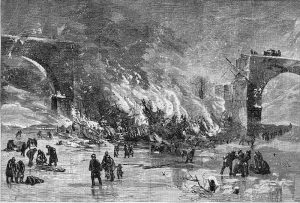 dead in his bedroom of a gunshot wound to the head. He had tendered his resignation to the Board of Directors the previous Monday. Collins was believed to have committed suicide out of grief and feeling partially responsible for the tragic accident, however, a police report at the time suggested the wound had not been self inflicted. Documents discovered in 2001 and an examination of Collins’ skull suggest that he had indeed been murdered. Amasa Stone committed suicide seven years later after experiencing financial difficulties with some foundries he had interests in, suffering from severe ulcers that kept him from sleeping, and scorn from the public over the disaster.
dead in his bedroom of a gunshot wound to the head. He had tendered his resignation to the Board of Directors the previous Monday. Collins was believed to have committed suicide out of grief and feeling partially responsible for the tragic accident, however, a police report at the time suggested the wound had not been self inflicted. Documents discovered in 2001 and an examination of Collins’ skull suggest that he had indeed been murdered. Amasa Stone committed suicide seven years later after experiencing financial difficulties with some foundries he had interests in, suffering from severe ulcers that kept him from sleeping, and scorn from the public over the disaster.


 My second cousin, Brian Schumacher and his wife, Lisa are two amazing people. Over the years of their marriage, they have been blessed with a beautiful group of children…but not in exactly the way you might expect. Brian’s first marriage, when he was 19 years old, gave him his first child…a daughter named Angie Marie was born January 8th, 1976, but that marriage ended in divorce. Brian married Lisa Basley on August 4, 1979. Their marriage was first blessed with a son, Brian Leslie born on February 8, 1980. Then, on May 20th, 1981 Lisa gave birth to another son, Nicholas Lee, and on June 29th, 1982, a daughter, Elizabeth Ann. Hemorrhaging during baby Elizabeth’s delivery brought with it the need for a hysterectomy for Lisa at age 29. She and Brian thought their days of having babies were over. They were quite sad about that because they had wanted more children, but God had a different plan for them.
My second cousin, Brian Schumacher and his wife, Lisa are two amazing people. Over the years of their marriage, they have been blessed with a beautiful group of children…but not in exactly the way you might expect. Brian’s first marriage, when he was 19 years old, gave him his first child…a daughter named Angie Marie was born January 8th, 1976, but that marriage ended in divorce. Brian married Lisa Basley on August 4, 1979. Their marriage was first blessed with a son, Brian Leslie born on February 8, 1980. Then, on May 20th, 1981 Lisa gave birth to another son, Nicholas Lee, and on June 29th, 1982, a daughter, Elizabeth Ann. Hemorrhaging during baby Elizabeth’s delivery brought with it the need for a hysterectomy for Lisa at age 29. She and Brian thought their days of having babies were over. They were quite sad about that because they had wanted more children, but God had a different plan for them.
Brian got saved in 1981, while working as a track layer on the railroad. A friend started telling him about Jesus and Brian became a “Jesus Freak” according to Lisa. At first Lisa was pretty uncomfortable with all that. She told him that if he didn’t stop telling everyone about Jesus, she was going to leave him. Once again, God had a different plan. One night in their bedroom Lisa awoke to a “bright light and a voice that sounded like Niagara Falls.” Jesus appeared to her and she kept saying take me with you. She knew that she wanted this Jesus in her life. Brian slept through the entire event, but Lisa was changed forever. She was no longer nervous about Brian talking to people about Jesus. She knew it was their calling. Still, in the back of their minds, the desire for more children continued to grow, and they would find out that God had a different plan for them again.
They checked into the possibility of adopting a baby in the 1990s, when their three children were under 10, and Angie was a teenager, but that was not God’s plan either, so they waited. Then, in God’s perfect timing, they got a call. It was 1992, and a friend said that she knew a girl that was pregnant and wanted to know if they were interested in adopting the baby. Brian and Lisa prayed about it and felt like God was telling them to do it. Their daughter, Grace Beverly was born August 11, 1993. Then, two years later, they got a call, saying that the 

 same girl was pregnant again. She offered Brian and Lisa that baby too. Their daughter, Angel Danell was born June 12, 1995. God’s plans never have mistakes in them. He wanted these two girls to have each other…and a great family. In 1996, God changed their lives again when their children’s cousin became pregnant, and couldn’t keep the baby at the time, and since she was enrolled in the tribe, family had the option to adopt first because the Native Americans prefer to keep a child close, but God made a way for Brian and Lisa, and their son Noah Richard was born August 4, 1997. At this point, Brian and Lisa thought their family was probably complete, but as they were learning, God had a different plan. A woman they met at their church had just come back from working in an orphanage in China. While there, she fell in love with a little girl called Precious. Brian and Lisa quickly fell in love too, and they felt that God was calling them to adopt Precious. Again, they would learn that God’s plans are sometimes different than ours. The adoption of Precious did not work out, but there was another child…a baby girl who needed a family. Brian and Lisa raised the $30,000 plus dollars to go to China and pick up that 6 month old baby. Their daughter Hope Elizabeth was born on September 23rd, 2001.
same girl was pregnant again. She offered Brian and Lisa that baby too. Their daughter, Angel Danell was born June 12, 1995. God’s plans never have mistakes in them. He wanted these two girls to have each other…and a great family. In 1996, God changed their lives again when their children’s cousin became pregnant, and couldn’t keep the baby at the time, and since she was enrolled in the tribe, family had the option to adopt first because the Native Americans prefer to keep a child close, but God made a way for Brian and Lisa, and their son Noah Richard was born August 4, 1997. At this point, Brian and Lisa thought their family was probably complete, but as they were learning, God had a different plan. A woman they met at their church had just come back from working in an orphanage in China. While there, she fell in love with a little girl called Precious. Brian and Lisa quickly fell in love too, and they felt that God was calling them to adopt Precious. Again, they would learn that God’s plans are sometimes different than ours. The adoption of Precious did not work out, but there was another child…a baby girl who needed a family. Brian and Lisa raised the $30,000 plus dollars to go to China and pick up that 6 month old baby. Their daughter Hope Elizabeth was born on September 23rd, 2001.
It was at this point that Brian and Lisa knew that their family was complete…at least until the grandchildren began to arrive. They marveled at the blessings God had given them. Their story doesn’t end here though. There were reasons that each of these precious adopted daughters were given their names. Grace received her name because they felt like, in a time just after Lisa’s dad’s passing God gave them Grace. Angel was just so sweet, they all kept calling her a little angel, and the name just stuck. Hope arrived at a time when Lisa felt like she had none and God gave her Hope to fill them all with Joy. As I was visiting with Brian and Lisa’s daughter, Elizabeth, in preparation for this story, she summed her parents up like this, “Pretty amazing…when I look back at what sacrifices that were made and the money, time, and love they have given all of us…well, God has been faithful to our family. If it weren’t for the color of our skin or eyes no one would know that were weren’t blood 
 relatives. It’s like the adoption creed says that my parents have in their house ‘Not flesh of my flesh nor bone of my bone, but still miraculously my own. Never forget for a single minute, you didn’t grow from my heart, but in it.’ I like to brag on my parents because you won’t find a couple that has struggled more, had so many sleepless nights with their children trying to find their own and loving unconditionally and always keeping Jesus in the center.” That is such a beautiful tribute to a beautiful couple, from a loving daughter.
relatives. It’s like the adoption creed says that my parents have in their house ‘Not flesh of my flesh nor bone of my bone, but still miraculously my own. Never forget for a single minute, you didn’t grow from my heart, but in it.’ I like to brag on my parents because you won’t find a couple that has struggled more, had so many sleepless nights with their children trying to find their own and loving unconditionally and always keeping Jesus in the center.” That is such a beautiful tribute to a beautiful couple, from a loving daughter.
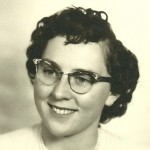 My husband, Bob’s aunt, Esther Hein has always lived far away from the rest of the family, and I find that a little bit sad, because it means that we don’t get to see her very often. Being far away makes it hard on Esther too, because if anything is going on, she feels like she is completely disconnected. We try to keep her informed, but there is nothing quite like distance to make a person feel disconnected from a situation. I suppose that the phone calls, help…especially when she can talk to the person she was so worried about, but I know from experience, it is easier on the family to be in the waiting room of the hospital than a thousand miles away. Whenever Esther would came to Casper for a visit, it was always a big deal. It may not have been an official family reunion, but those mini family reunions are really nice too. It has been a number of
My husband, Bob’s aunt, Esther Hein has always lived far away from the rest of the family, and I find that a little bit sad, because it means that we don’t get to see her very often. Being far away makes it hard on Esther too, because if anything is going on, she feels like she is completely disconnected. We try to keep her informed, but there is nothing quite like distance to make a person feel disconnected from a situation. I suppose that the phone calls, help…especially when she can talk to the person she was so worried about, but I know from experience, it is easier on the family to be in the waiting room of the hospital than a thousand miles away. Whenever Esther would came to Casper for a visit, it was always a big deal. It may not have been an official family reunion, but those mini family reunions are really nice too. It has been a number of 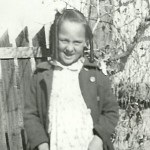 years since Esther has been able to come for a visit, because of health concerns she has had, but I hope that someday soon she will be able to come for a visit again, because it really has been far too long since we saw her last.
years since Esther has been able to come for a visit, because of health concerns she has had, but I hope that someday soon she will be able to come for a visit again, because it really has been far too long since we saw her last.
Years ago, when she was a child, Esther’s family lived in the country, and during the hard winter months, when the weather in Montana was as harsh and unpredictable as Wyoming’s weather seems to be this year, Esther was sent to stay with her big brother, Walt Schulenberg’s family during the school year, to ensure that she was able to make it to school each day. As a little girl, I suppose living in town with her  brother’s family seemed as far away from her parents, as the distance she is away from family now seems…especially for a little girl. Nevertheless, I’m sure it also seemed a little bit like a great adventure to her.
brother’s family seemed as far away from her parents, as the distance she is away from family now seems…especially for a little girl. Nevertheless, I’m sure it also seemed a little bit like a great adventure to her.
Esther has always been a crafty person. She makes quilts, curtains, and other sewing crafts. She is also an artist, and has painted everything from canvas to saw blades. Her favorite things to paint are landscapes, and that is cool, because that is my favorite paintings too. And were it not for Esther, my husband’s hair would look awful most of the time, because it was Esther who showed me how to cut it right…thankfully!! Today is Esther’s 76th birthday. Happy birthday Esther!! Have a great day!! We love you!!
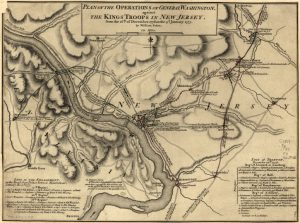 The year was 1776, and it was Christmas Day, but for the men with George Washington, it was not a day of celebration…not exactly anyway. They were in the middle of fighting a war, and the fighting didn’t just stop because it was Christmas, not this year anyway. This was to be an unusual Christmas as far as wartime Christmases went. In 1776, it was difficult to fight a war in the wintertime, because the slower modes of travel. Most times in a war, the armies took the Winter off from warring, but this army was not laying up for the Winter. This war would continue on…no matter what the weather was like.
The year was 1776, and it was Christmas Day, but for the men with George Washington, it was not a day of celebration…not exactly anyway. They were in the middle of fighting a war, and the fighting didn’t just stop because it was Christmas, not this year anyway. This was to be an unusual Christmas as far as wartime Christmases went. In 1776, it was difficult to fight a war in the wintertime, because the slower modes of travel. Most times in a war, the armies took the Winter off from warring, but this army was not laying up for the Winter. This war would continue on…no matter what the weather was like.
Things looked bad that year. The Continental Army had suffered a series of defeats in their battle against the British oppression. After some successful maneuvers, Colonel Henry Knox came to the attention of General George Washington who worked to place him in overall command to the Continental Army. Under his command, the Continentals brought 18 cannon over the river…3 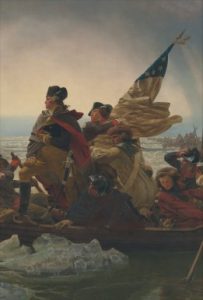 Pounders, 4 Pounders, some 6 Pounders, horses to pull the carriages, and enough ammunition for the coming battle. The 6 Pounders, weighing as much as 1,750 pounds were the most difficult to transport to the far side of the river. But in the end all the trouble of moving this large artillery train to Trenton proved its worth. Knox would place the bulk of his artillery at the top of the town where its fire commanded the center of Trenton.
Pounders, 4 Pounders, some 6 Pounders, horses to pull the carriages, and enough ammunition for the coming battle. The 6 Pounders, weighing as much as 1,750 pounds were the most difficult to transport to the far side of the river. But in the end all the trouble of moving this large artillery train to Trenton proved its worth. Knox would place the bulk of his artillery at the top of the town where its fire commanded the center of Trenton.
The plan devised by Knox and Washington was to conduct a surprise attack upon a Hessian garrison of roughly 1,400 soldiers located in and around Trenton, New Jersey. Washington hoped that a quick victory at Trenton would bolster sagging morale in his army and encourage more men to join the ranks of the Continentals in the coming new year. After several councils of war, General George Washington set the date for the river crossing for Christmas night 1776. It was an unprecedented plan, because the expectation was always that the armies would hold up somewhere for the winter. No one had attacked in winter before, and especially on Christmas. George Washington led 2,400 troops on a daring nighttime crossing of the icy Delaware River. Stealing into New Jersey, on December 26 the Continental forces launched the surprise attack on Trenton.
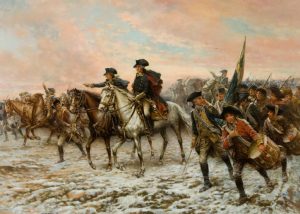 The gamble paid off. Many of the Hessians were still disoriented from the previous night’s holiday bender, and colonial forces defeated them with minimal bloodshed. While Washington had pulled off a shock victory, his army was unequipped to hold the city and he was forced to re-cross the Delaware that same day…with nearly 1,000 Hessian prisoners in tow. Washington would go on to score successive victories at the Battles of the Assunpink Creek and Princeton, and his audacious crossing of the frozen Delaware served as a crucial rallying cry for the beleaguered Continental Army. The Revolutionary War would be won by the Continental Army of course, and the rules of warfare changed forever.
The gamble paid off. Many of the Hessians were still disoriented from the previous night’s holiday bender, and colonial forces defeated them with minimal bloodshed. While Washington had pulled off a shock victory, his army was unequipped to hold the city and he was forced to re-cross the Delaware that same day…with nearly 1,000 Hessian prisoners in tow. Washington would go on to score successive victories at the Battles of the Assunpink Creek and Princeton, and his audacious crossing of the frozen Delaware served as a crucial rallying cry for the beleaguered Continental Army. The Revolutionary War would be won by the Continental Army of course, and the rules of warfare changed forever.

 As I was contemplating the Christmas Day activities to come, my mind wandered back to Christmases of my past. As a child, I remember waking up very early, with struck orders not to go out into the living room until our parents were awake. It seemed like a lifetime before they woke up. It wasn’t, of course, but in my youthful mind, it felt that way nevertheless. Christmas was a day to stay home. After the presents were opened, the cooking began. Of course, the turkey had been cooking for a while by then…another sign that Mom and Dad weren’t really still sleeping when we were trying to wake them up. My sisters and I had the rest of the morning to play with our new toys, and help out in the kitchen. It didn’t matter if it was snowing outside or not, because we had no place to go…the day was ours. I miss those carefree, slowed down, stay-at-home Christmases sometimes.
As I was contemplating the Christmas Day activities to come, my mind wandered back to Christmases of my past. As a child, I remember waking up very early, with struck orders not to go out into the living room until our parents were awake. It seemed like a lifetime before they woke up. It wasn’t, of course, but in my youthful mind, it felt that way nevertheless. Christmas was a day to stay home. After the presents were opened, the cooking began. Of course, the turkey had been cooking for a while by then…another sign that Mom and Dad weren’t really still sleeping when we were trying to wake them up. My sisters and I had the rest of the morning to play with our new toys, and help out in the kitchen. It didn’t matter if it was snowing outside or not, because we had no place to go…the day was ours. I miss those carefree, slowed down, stay-at-home Christmases sometimes.
When I got married, there were suddenly two families to spend Christmas…and every other holiday, with. Things got hectic very fast. We found ourselves running from one house to the other in celebration of the day. Yes, there was plenty of stress, but there really was celebration too, because Christmas is a day of celebration, both in the spiritual and secular versions. Families worked together to make for an easy transition from one house to the other, even though each one wished they could have had a little bit more time with us. Finally, at the end of a very long day, wonderful as it was, we dragged ourselves back home, and figured that there was always tomorrow to stay home and let the kids play with all of their new things.
When our girls got married a whole new facet was added to the Christmas/holiday mix. Not only was there still 
 my family and Bob’s, but now we had Kevin’s and Travis’ families. The holidays became almost chaotic. Still, it was about family, and that was what mattered. Our families, their families, one big happy family. What I learned from this time spent reminiscing is that whatever Christmas or the other holidays are to your family, that is the thing that matters, because after the real reason for the Christmas season…the birth of our Lord and Saviour, Jesus Christ…family is the next thing in the line of the most important things in life. Merry Christmas to all of my dear family, and everyone everywhere.
my family and Bob’s, but now we had Kevin’s and Travis’ families. The holidays became almost chaotic. Still, it was about family, and that was what mattered. Our families, their families, one big happy family. What I learned from this time spent reminiscing is that whatever Christmas or the other holidays are to your family, that is the thing that matters, because after the real reason for the Christmas season…the birth of our Lord and Saviour, Jesus Christ…family is the next thing in the line of the most important things in life. Merry Christmas to all of my dear family, and everyone everywhere.

